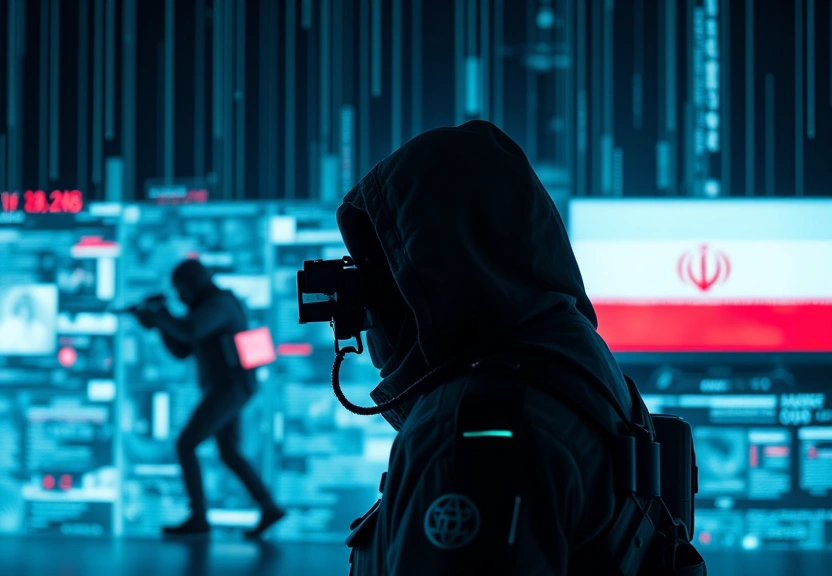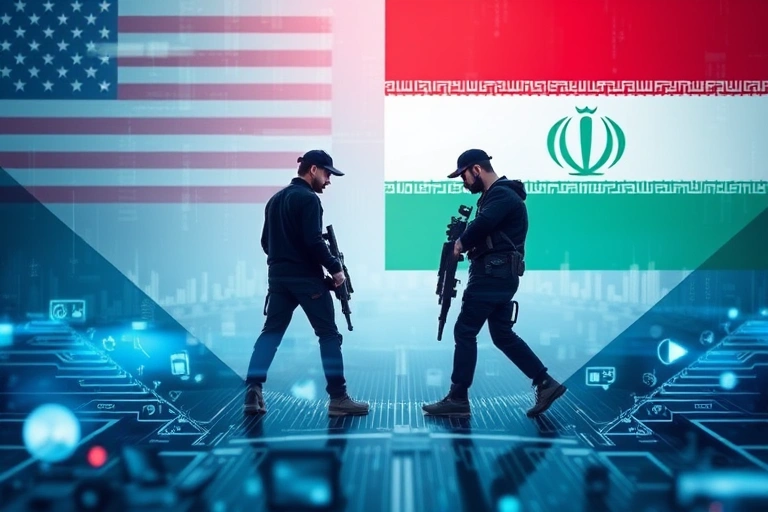The Rise of Cyber Warfare: Analyzing the United States and Iran’s Digital Conflict in 2025
Introduction
In the modern geopolitical landscape, cyber warfare has emerged as a crucial element of national security strategies. By 2025, the digital conflict between the United States and Iran has escalated significantly, showcasing the evolution of cyber espionage tactics and the implications of cybersecurity threats. This article aims to analyze the intricacies of the US-Iran digital conflict, exploring the motivations, methods, and consequences of this ongoing cyber warfare.

Development of Cyber Warfare in 2025
As technology advances, so do the methods employed in cyber warfare. By 2025, both the United States and Iran have developed sophisticated cyber capabilities that allow them to engage in a range of offensive and defensive operations. The conflict is characterized by a series of high-profile cyber attacks, digital espionage, and information warfare strategies.
The US-Iran digital conflict has its roots in political tensions and military confrontations, which have been compounded by the rapid technological advancements in the cyber domain. Iran has increasingly turned to cyber operations as a means to counterbalance the military superiority of the United States. This has led to a series of retaliatory attacks, cyber espionage campaigns, and the use of malware to disrupt critical infrastructure.
In 2025, the tactics employed by both nations illustrate the complexity of modern cyber warfare. The United States has focused on developing offensive cyber capabilities that can be used to deter Iranian aggression. In contrast, Iran has adopted a more defensive posture, utilizing cyber espionage to gather intelligence on US operations and protect its national interests. This continuous cycle of attack and counterattack has further entrenched the digital conflict between the two nations.
Analysis and Benefits
The rise of cyber warfare presents both challenges and opportunities for nation-states. On one hand, the potential for significant disruption to critical infrastructure, financial systems, and national security is a constant concern. On the other hand, the ability to conduct operations in cyberspace allows nations to achieve strategic objectives without the need for traditional military engagement.
In the context of the US-Iran digital conflict, the implications are profound. The use of cyber espionage tactics has enabled Iran to monitor US military movements and gather valuable intelligence without the risk of conventional warfare. This capability not only enhances Iran’s security posture but also complicates US military strategies in the region.
Furthermore, the conflict has highlighted the importance of cybersecurity threats in national defense. As both countries invest heavily in cyber capabilities, they also face the challenge of protecting their own digital assets from enemy attacks. The ongoing conflict underscores the necessity for robust cybersecurity measures to safeguard sensitive information and critical infrastructure from potential breaches.
In summary, the analysis of the US-Iran digital conflict reveals a dynamic and evolving landscape where cyber warfare plays a pivotal role. The benefits of employing cyber tactics are evident, as both nations seek to leverage technology for strategic advantage while managing the inherent risks associated with such operations.
Implementation Practical
For nations involved in cyber warfare, practical implementation of strategies is crucial. The US and Iran have adopted various approaches to enhance their cyber capabilities while mitigating risks associated with cyber operations.
First, both nations have invested significantly in developing cyber intelligence units. These units are tasked with monitoring potential threats, conducting cyber espionage, and launching offensive operations. In the United States, agencies like the National Security Agency (NSA) play a vital role in coordinating cyber efforts, while Iran has established its own cyber warfare units to bolster its defenses and conduct retaliatory actions.
Moreover, collaboration with private sector entities has become increasingly important. Both countries recognize that a strong cybersecurity posture requires cooperation between government and private organizations. In the US, partnerships with tech companies enhance the nation’s ability to detect and respond to cyber threats. Similarly, Iran has sought to engage local tech firms to develop indigenous solutions for cybersecurity challenges.
Furthermore, raising public awareness about cybersecurity is essential. As individuals and organizations become more aware of the potential threats, they can take proactive measures to protect their digital assets. This is particularly important given the increasing number of cyber attacks targeting critical infrastructure.
Finally, international cooperation is vital in addressing the challenges posed by cyber warfare. Through diplomatic channels, nations can engage in discussions aimed at establishing norms and standards for behavior in cyberspace. Such initiatives can help mitigate the risks associated with cyber warfare and promote stability in the digital domain.

Frequently Asked Questions
What are the main objectives of the US and Iran in their cyber conflict?
The primary objectives include gathering intelligence, disrupting critical infrastructure, and demonstrating technological prowess. Both nations aim to gain a strategic advantage while protecting their national interests.
How has cyber warfare evolved since the early 2020s?
Since the early 2020s, cyber warfare has evolved significantly with advancements in technology. Techniques have become more sophisticated, with an increase in state-sponsored cyber attacks and the use of artificial intelligence to enhance cyber capabilities.
What role do private companies play in cybersecurity efforts?
Private companies play a crucial role in cybersecurity efforts by providing technology solutions, expertise, and resources. Collaboration between government agencies and private firms enhances the overall security posture and enables timely responses to cyber threats.
What are the implications of cyber warfare for global security?
Cyber warfare poses significant implications for global security, including the risk of escalation into conventional conflicts, disruption of essential services, and potential economic consequences. As nations increasingly rely on digital infrastructure, the stakes continue to rise.
How can countries improve their cybersecurity measures?
Countries can improve their cybersecurity measures by investing in technology, enhancing collaboration between public and private sectors, conducting regular training and awareness programs, and establishing legal frameworks to address cybercrime effectively.
Conclusion
The rise of cyber warfare between the United States and Iran has transformed the landscape of modern conflict. As both nations navigate the complexities of cyber espionage tactics and cybersecurity threats, the implications for national security and global stability are profound. Understanding the dynamics of this digital conflict is essential for policymakers, military strategists, and cybersecurity professionals alike. As we move forward, the lessons learned from the US-Iran digital conflict will shape the future of cyber warfare and the strategies employed by nations worldwide.






